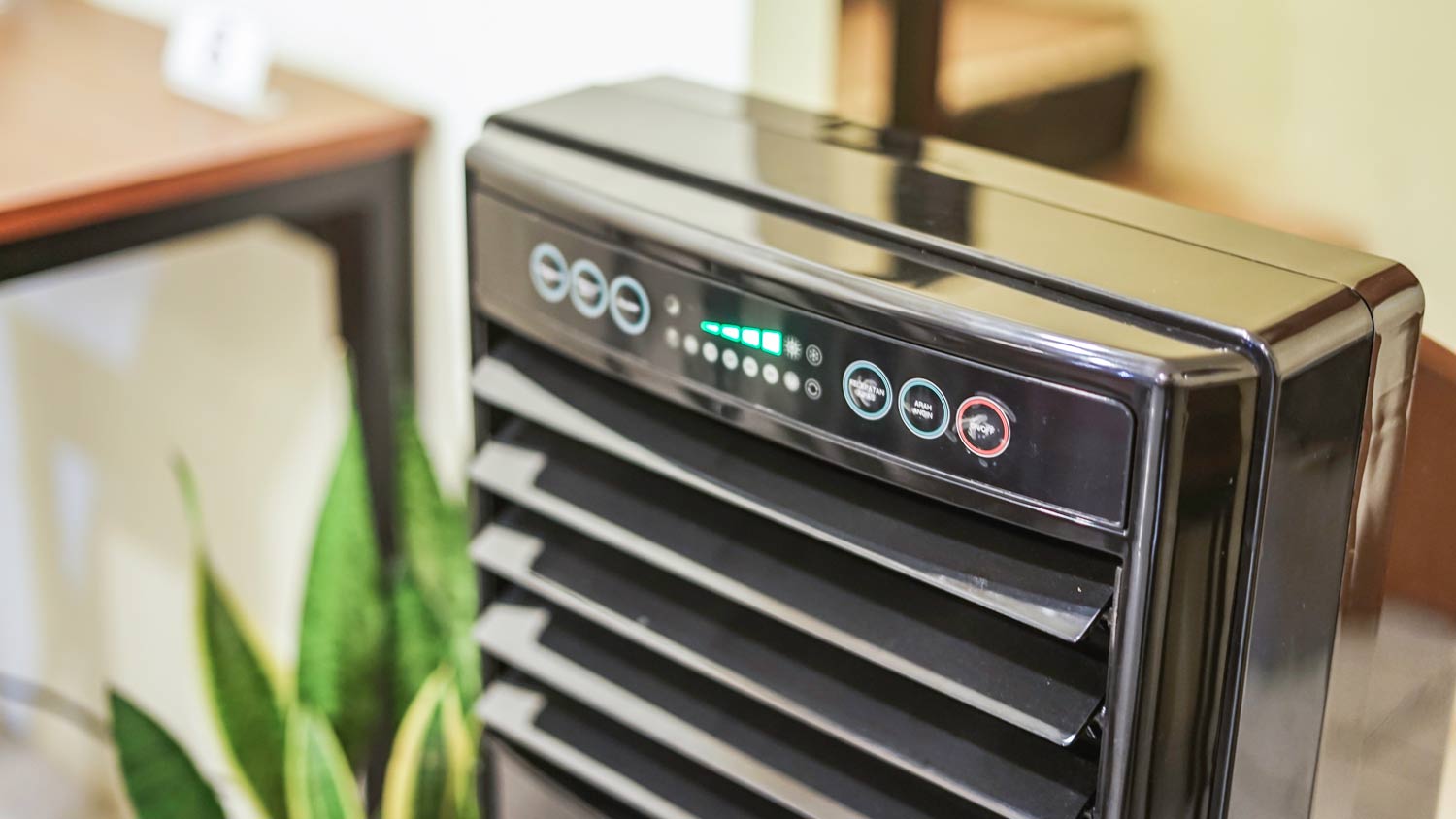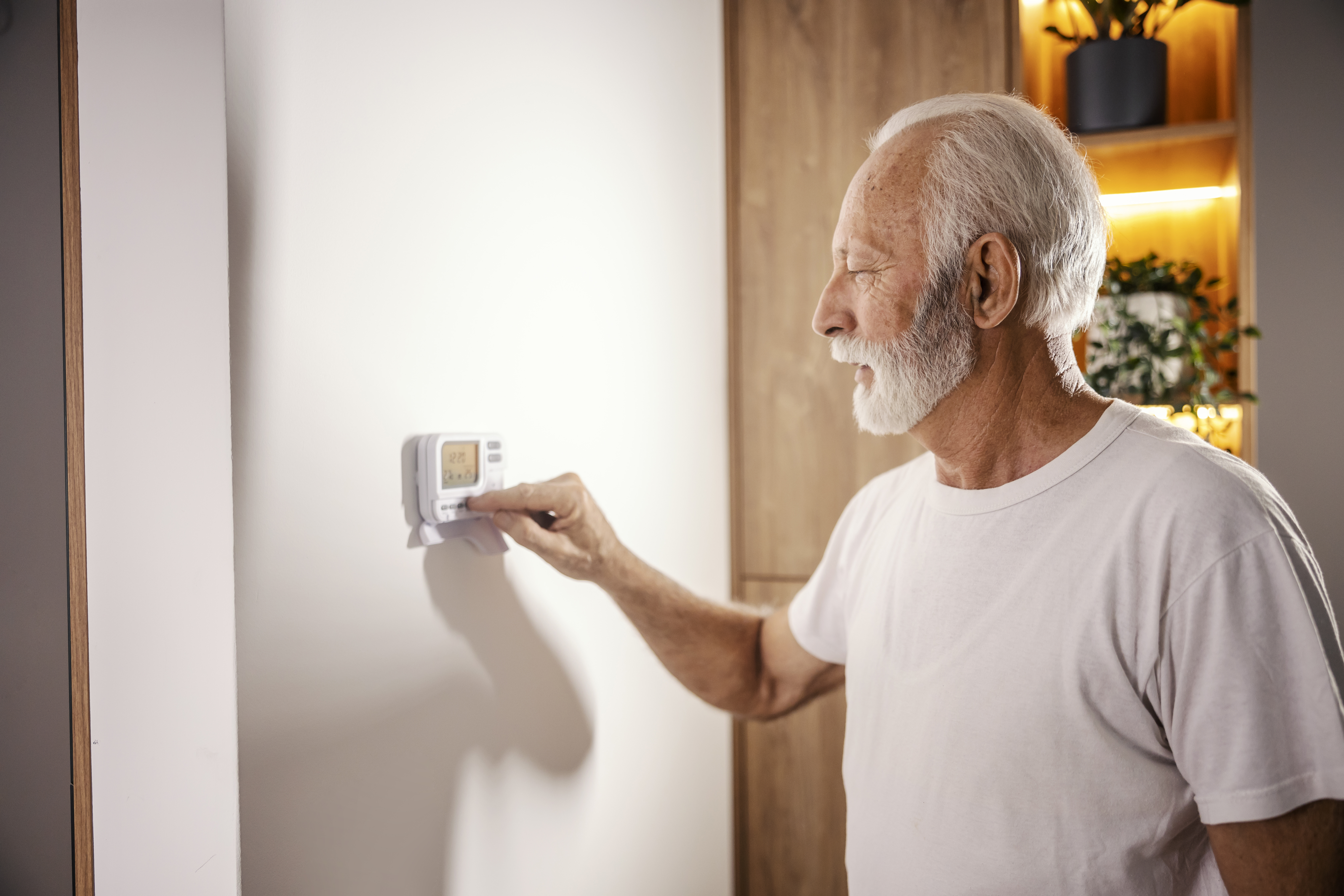
What you’ll pay in Columbus, OH, for furnace repairs depends on many factors. Here’s a breakdown of what can go wrong and the cost to fix those issues.
Compare and contrast these two popular cooling devices


Swamp coolers use natural evaporation to cool the air, while portable ACs work similarly to a traditional AC system.
Swamp coolers are more energy-efficient and eco-friendly than portable AC units.
Portable ACs cool more quickly and offer customizable temperature settings.
Swamp coolers are not suitable for homes in humid climates.
If you’re debating on which type of cooling system to keep your home cool when the heat strikes, consider portable AC vs. swamp coolers. These two all-in-one AC alternatives offer flexible, portable, and convenient cooling, but each is ideal for different scenarios. Let’s take a look at how these cooling options compare.
Portable ACs and swamp coolers are two types of air conditioners with different cooling mechanisms and modes of operation. Portable AC units use refrigerants to cool the air, extracting warm air from the room and expelling heat outside through a ventilation system. In contrast, swamp coolers rely on the natural water evaporation process to lower the air temperature.
Because of their design, there are differing functionalities for a portable AC vs. swamp cooler. Portable ACs offer precise temperature control and are suitable for various climates, while swamp coolers don’t offer the same level of temperature control and are less effective in humid climates.

Portable air conditioners are compact cooling devices that have a compressor, condenser, and evaporator, all housed within a single unit. Unlike central air vs. forced air systems, they don’t require ductwork or complex installations—they only need ventilation via a door or window. Portable AC units work by extracting the warm air in a room, cooling it through a refrigeration cycle, and expelling the heat outside through a venting system. They also offer simple settings to change temperature and humidity control, making them a flexible cooling solution for indoor spaces in any type of environment.
| Pros | Cons |
|---|---|
| Cools fast | Needs fresh air source |
| Adjustable temperature | High energy usage |
| Dehumidifies | Noisy |
| Works in any climate | Indoor use only |
Best For:
People with seasonal allergies
Enclosed spaces
Homes in humid climates
Portable AC units offer precise temperature control, and it’s easy to move them from one room to another to provide cooling wherever it’s needed. Also, since they don’t rely on low surrounding humidity levels to function properly, they’re effective in both dry and humid climates.
A main downside of a portable AC is its increased energy consumption compared to swamp coolers. Portable AC units use about 2,900 watts per hour, whereas swamp coolers only use 250 kilo-watts per month. As a result, you’ll likely have higher monthly energy bills when it’s in use. Plus, portable ACs require venting through a window or door, which may limit placement options within a room. They’re also fairly noisy whenever the compressor is operating, and they’re only suitable for indoor use.
Swamp coolers, also known as evaporative coolers, cool the air through a process known as evaporative cooling. So, what is evaporative cooling? The term refers to the use of natural water evaporation to lower the temperature of the air. Unlike traditional coolers that use refrigerants, evaporative coolers employ the natural process of water evaporation to cool a space. They draw warm air through moist pads or filters, where the water evaporates, absorbing heat and cooling the air before circulating it back into the room. Consult a local swamp cooler technician for more information about the benefits and drawbacks of this AC alternative.
| Pros | Cons |
|---|---|
| Relatively quiet | Takes longer to cool |
| Low energy usage | Not suitable for humid areas |
| Many can be used outdoors | Less precise temperature control |
Best For:
Dry environments
Homes that need additional humidification
Homes with good air quality
Because of their design, swamp coolers are generally more energy-efficient than portable air conditioners. They rely on the natural process of water evaporation, which consumes less energy than refrigerant-based cooling systems. Additionally, swamp coolers are effective in dry climates and can provide a cool, humidified environment without the need to vent air outside.
One of the main drawbacks of swamp coolers is their limited effectiveness in humid climates, as these conditions can make the water evaporation process less efficient. They also require regular maintenance, including regularly cleaning, replacing water pads, and adding water to remain effective. They also don’t offer the same level of temperature control as a portable AC. Swamp coolers cost $1,560 to $3,740 to install, which is more expensive than a portable AC.
There are distinct differences between portable ACs and swamp coolers to consider before purchasing. Here’s how the two compare.
A portable AC works fast to fill a space with cool air. They’re especially effective when cooling enclosed spaces. A swamp cooler isn’t as powerful or effective at cooling, so it takes longer to fully cool a room.
A swamp cooler is highly energy efficient, only requiring the power of natural evaporation and electricity to run its fan and circulate the cool air. A portable AC system requires a much heftier load of electricity to operate.
Portable ACs need to be hooked up to a fresh air source for ventilation, while swamp coolers can move freely throughout the home. Also, you can use most swamp coolers indoors or outdoors, while portable ACs can only be used indoors.
One major advantage of a portable AC vs. swamp cooler is temperature control. Portable ACs feature adjustable temperatures and humidity levels, while swamp coolers are not adjustable.
Swamp coolers have relatively quiet operation. On the other hand, portable air conditioners can be relatively loud when the compressor is running.
Along with being more energy efficient, swamp coolers are more environmentally friendly because they don’t need refrigerants to operate. Many types of refrigerant are harmful to the environment: R-22, or freon, depletes the Ozone layer, while HFC refrigerants such as R-410A have high Global Warming Potential (GWP) per the Environment Protection Agency. Since swamp coolers only use natural evaporation to cool the air and a fan to circulate it, their overall environmental impact is much milder than portable ACs, as well as other systems that use refrigerants.
From average costs to expert advice, get all the answers you need to get your job done.

What you’ll pay in Columbus, OH, for furnace repairs depends on many factors. Here’s a breakdown of what can go wrong and the cost to fix those issues.

Regularly replacing your HVAC filter regularly is vital for a healthy system. Learn how much an HVAC filter replacement costs with this informative guide.

Discover the true swamp cooler installation cost. Learn about average prices, cost factors, and ways to save on your home cooling project.

An oversized AC unit can cause indoor humidity and uneven temperatures. Learn how to correct an oversized air conditioner without replacing it.

Discover the differences between 3.5 CFM and 5 CFM vacuum pumps, including which option is best for HVAC jobs and how to choose the right one for you.

Have you ever wondered what a furnace is and what it’s used for? Check out this furnace guide to learn how it works, costs, maintenance tips, and more.